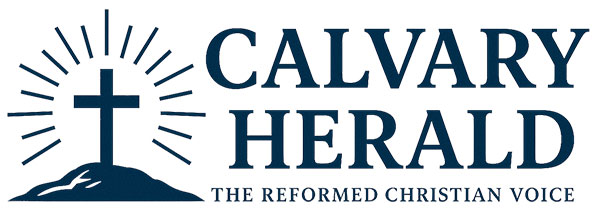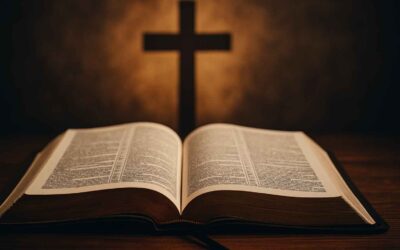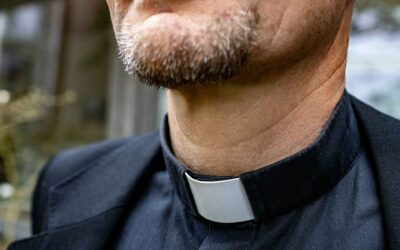“Iron sharpeneth iron; so a man sharpeneth the countenance of his friend.” – Proverbs 27:17
In a world at war with truth, the Church must stand as a bulwark of faithfulness. Within Redeemed in Faith Reformed Church, we have established two sacred ecclesiastical orders: The Order of the Redeemed Guard and The Daughters of the Covenant. These are not novelties or remnants of medieval superstition. Rather, they are deeply rooted in biblical principles and consistent with the Reformed tradition’s historic emphasis on covenantal community, spiritual discipline, and mutual edification.
This article provides a theological foundation for their existence and their work.
1. Biblical Foundations for Ordered Fellowship
Scripture presents repeated examples of God’s people organizing themselves for spiritual growth, service, and defense of the faith:
a) Covenantal Communities
The Church is a covenantal body (Jeremiah 31:33; Hebrews 8:10), and within it there have always been smaller groups for edification:
- The company of prophets (1 Samuel 10:5)
- The bands of disciples (Acts 2:42-47)
- Paul’s instruction to Titus to create groups of older women teaching younger women (Titus 2:3-5)
These are biblical patterns of ordered fellowship where believers unite under shared vows of faith and service.
b) Guardianship of Truth
Paul exhorts Timothy to “guard the good deposit entrusted to you” (2 Timothy 1:14). The language of guardianship reflects a sacred trust to protect doctrine, which the Redeemed Guard takes up literally and spiritually.
Similarly, the Daughters of the Covenant model the faithfulness of women like Deborah (Judges 4:4-9), Ruth (Ruth 1:16-17), and Priscilla (Acts 18:26), who nurtured and preserved God’s people through intercession and teaching.
2. Reformed Historical Precedent
The Reformers rejected monasticism as a system of works-righteousness and withdrawal from the world. Yet, they affirmed the need for disciplined, ordered associations of believers.
a) Geneva and the Consistory
John Calvin organized Geneva’s church life into consistories and collegia pietatis (colleges of piety) where Christians were disciplined and trained for holy living.
b) Puritan “Holy Clubs” and Bands
In England and New England, Puritans formed covenant societies where men and women vowed mutual accountability, catechesis, and service. These were not “orders” in the Roman sense, but they functioned with vows of commitment under the church’s authority.
c) Huguenot Companies
In France, Reformed Christians under persecution organized into companies (compagnies chrétiennes) for mutual protection, prayer, and witness in hostile environments.
The Redeemed Guard and Daughters of the Covenant draw inspiration from these historical precedents—not as separate religious classes, but as covenantal fellowships of lay believers dedicated to Christ and His Church.
3. Ecclesiastical Orders: Not Roman Monasticism
The Redeemed Guard and Daughters of the Covenant are not monastic orders.
They do not:
❌ Withdraw from the world into cloisters.
❌ Take vows of celibacy, poverty, or obedience to a superior apart from Christ.
❌ Create a spiritual hierarchy over other church members.
Instead, they:
✅ Live within their families and vocations (1 Corinthians 7:17).
✅ Embrace covenant faithfulness to their local church (Hebrews 13:17).
✅ Promote spiritual discipline, service, and evangelism within the priesthood of all believers (1 Peter 2:9).
This aligns with the Reformed principle that every believer—man or woman—is a soldier of Christ in their respective callings.
4. The Role of the Redeemed Guard and Daughters of the Covenant
The Redeemed Guard
- Equips men to be defenders of truth, leaders in their homes, and servants of the Church.
- Models biblical manhood marked by courage, discipline, and sacrificial service.
- Stands in the gap as watchmen over doctrine and life (Ezekiel 33:7).
The Daughters of the Covenant
- Trains women in covenant faithfulness, hospitality, and intercessory prayer.
- Models biblical womanhood marked by wisdom, strength, and compassion (Proverbs 31:25-26).
- Nurtures the faith of younger generations through discipleship and example.
Together, these Orders represent a harmonious expression of complementarian roles, advancing the kingdom through distinct yet united service.
5. Accountability and Oversight
Both Orders function under the spiritual oversight of Redeemed in Faith Reformed Church’s session of elders. This safeguards against the errors of medieval orders, ensuring:
- Submission to the ordinary means of grace (Word, sacrament, and prayer).
- Alignment with the 1689 Baptist Confession of Faith.
- Transparency and accountability to the visible church.
Conclusion: For Christ and His Kingdom
The Redeemed Guard and Daughters of the Covenant are not innovations, but recoveries of a biblical and historic pattern: Christians binding themselves together in covenant to serve Christ faithfully in a hostile world.
They are not elite classes of believers, but servants of all—called to pray, labor, defend, and nurture as part of the Church militant. In this age of spiritual decay, such sacred fellowships stand as a testimony that Christ’s people are still willing to say:
“Here am I; send me.” – Isaiah 6:8
May these Orders glorify God, strengthen the Church, and prepare a faithful remnant for the generations to come.




0 Comments